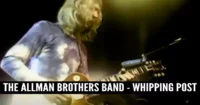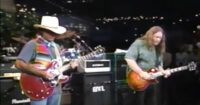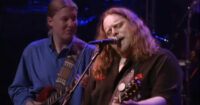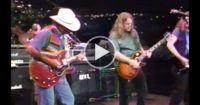The legacy of “Whipping Post” transcends time, standing as an iconic testament to The Allman Brothers Band’s prowess and creativity.
The Allman Brothers Band – The Same Thing
Crank it way up and sink into some serious rocking blues as the Allman Brothers Band throw down on this Willie Dixon staple.
Eric Clapton with ABB – Why Has Love Got To Be So Sad
From the Crossroads Guitar Festival 2013 – Eric Clapton with Allman Brother Bands, Derek Trucks and Warren Haynes
Allman Brothers Band – One Way Out
The Reverberating Strings of the Allman Brothers Band: Guitarists that Shaped a Legacy The Allman Brothers Band, often hailed as pioneers of Southern Rock, owed much of their musical distinction to the extraordinary guitarists ...
Eric Clapton with ABB – Why Has Love Got To Be So Sad
From the Crossroads Guitar Festival 2013 – Eric Clapton with Allman Brother Bands, Derek Trucks and Warren Haynes
Allman Brothers Band – One Way Out
The Guitar Giants of The Allman Brothers Band The Allman Brothers Band, an ensemble that wove a rich tapestry of southern rock, jazz, and blues, had an indomitable spirit anchored by the talents of ...
The Allman Brothers Band – Whipping Post
The legacy of “Whipping Post” transcends time, standing as an iconic testament to The Allman Brothers Band’s prowess and creativity.
The Allman Brothers Band – Worried Down With The Blues
Worried Down With The Blues is the song performed by The Allman Brothers Band and appears on the album “One Way Out”….
The Allman Brothers Band – The Same Thing
Crank it way up and sink into some serious rocking blues as the Allman Brothers Band throw down on this Willie Dixon staple.
The Allman Brothers Band – Statesboro blues
The Allman Brothers Band They have been one of the most influential rock groups in the United States since the mid-1970s. The band was formed in 1969 with Duane Allman, Gregg Allman, Forrest Richard ...







